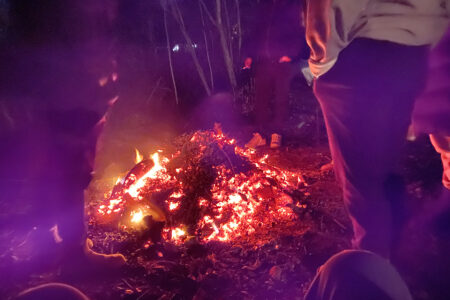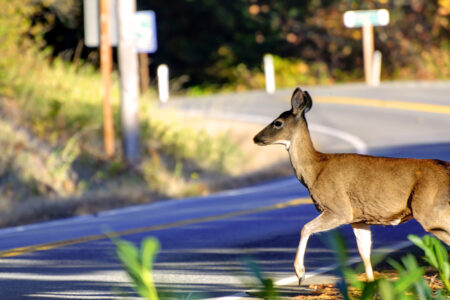Christina Lake Stewardship Society’s annual meeting discusses future of weevils, logging, new riparian projects and the Kettle Valley Watershed Management Plan
The Christina Lake Stewardship Society Watershed Management Annual Review gave lake residents an opportunity to celebrate a year of progressive accomplishments and great new projects to come.
Now into its seventh year, the annual review gives residents a chance to speak with environmental and government professionals about their concerns while keeping up to date on the projects to come.
More than 30 people came out on Wednesday, Dec. 5 to spend a day at the Christina Lake Community Hall.
“We’ve got a lot of work to do down the road and a lot of good people working on it,” said Grace McGregor, Area C director for the Regional District Kootenay Boundary who also co-facilitates the review with Brenda LaCroix, project coordinator of the Christina Lake Stewardship Society.
LaCroix would agree.
“I’m looking forward to another year of programs, seeing the interpretive center evolving and working on projects like the zebra and quagga mussels (prevention).”
McGregor said the review is a great way to quantify and reflect on the past year’s progress while looking on how to improve on that work in the future.
This year was special because there are a lot of new projects coming up for next year, and the Kettle River Water Management Plan is now entering phase two of the project, which includes developing a plan that will both affect and complement the existing watershed plan managed by the stewardship society.
LaCroix anticipates we’ll be seeing more joint partnerships that involve and benefit not only Christina Lake but the entire Boundary area.
Milfoil removal had successful year
Doubling the efforts of Eurasian milfoil removal has paid off in Christina Lake.
This year was a milestone in the 26 year-long program to control the invasive alien species that chokes up the lake’s water.
Instead of the one dive crew who would operate for 36 hours a week, the Regional District Kootenay Boundary doubled the program both in money and time.
This past dive season operated from May 7 to Oct. 31 for a total of 24 weeks, the longest that has ever been done, said Andy Gilmore, scuba dive crew supervisor during his presentation. The team of seven divers ran seven days a week for 84 hours of dive time a week which is 233 per cent more than what was done in 2011. In 2011 they had only three divers.
The price has also doubled with the efforts and has increased from $160,000 a year to $300,000.
They concentrated on the most severe areas and previously abandoned areas, many of which are located in the south end of the lake.
“Our goal was to retake most of the southern bay,” said Gilmore. “We were also able to retake the provincial campground and Crown area that had been previously abandoned … In the southern bay alone, 250,000 plants were removed, which was never done in the last three years, so it was a huge increase in productivity. We were removing four to five truck loads every Thursday out of the southern bay alone.”
Those plants were then dropped off at Durand’s Nursery to be used as organic fertilizer.
This year was also the first time the dive team has used GPS to track and map where they were working and what they were accomplishing. The public could follow the dive team online at the RDKB website.
Next year they hope to have a full team of eight divers and continue the long doubled dive work going.
The RDKB is also continuing their efforts at getting a weevil rearing project started. As stated in previous Boundary Sentinel article, the RDKB is working to obtain government approval to use weevils as biological control for the milfoil to compliment the dive team’s removal efforts.
“The authorities are taking a very cautious approach to this,” said Alan Stanley, RDKB director of environmental services. “And you can see why because there are any number of horror stories and disaster stories when introducing something that could potentially take off.”
Stanley said a timeline for possible weevil rearing or introduction just isn’t something he could project at this moment.
Logging over next year, then nothing projected for next few years
Logging up Stewart Creek Road has begun over the past week, but will likely be done by fall 2013, said Dawn Guido, practices forester with BC Timber Sales in Grand Forks.
Twelve logging blocks were sold this past summer in two individual timber sales packages for logs located up Stewart Creek Road. Both sales, which happen on the open market, sold to local contractors. One has started harvesting this past week and will finish within the next two or three months, said Guido. The other will start shortly after spring break up in April or May to be completed by fall 2013, she said.
The $1.8 million earned from the sale of this Crown land resource was “considerable” said Guido and goes directly into government coffers.
The 12 blocks, of between two and 40 hectares, are more than one kilometer from Christina Lake and include four watersheds: Spooner Creek, Gill Creek, Bart Creek and Stewart Creek.
While active logging is happening at the lake right now, Guido said it should be the last for the next few years by BC Timber Sales.
“As far as our future plans are concerned, we don’t have any plans currently for the Christina Lake operating area,” said Guido. “Our plans go up to two to three years and there are no timber sales in those plans for two to three years. However, plans are flexible and they change so there is a possibility we may be looking at this area. But from my talk today you have a pretty good idea that the time from when we first go out and look at an area and develop the timber sale and put it up for market takes a considerable length of time.”
One homeowner expressed concern over Gill Creek, from which he gets water from. Guido assured him that a proper assessment was done and there will be no impact on the creek or the surrounding watershed. She said a hydrologist is hired to personally walk the watershed in question and assess potential impacts logging may have on the water.
“(The hydrologist’s) report confirmed Gill Creek is resilient, stable and that it is unlikely our harvesting will have any impact on it,” said Guido.
After the logging has happened, BC Timber Sales begins replanting immediately.
Riparian projects to start in 2013
The government recently awarded $250,000 to this region for five site restoration projects to be completed within the next three years.
Many of these projects will benefit both Christina Lake and the surrounding watersheds, Jenny Coleshill, project coordinator for the Granby Wilderness Society said during her presentation.
She said riparian areas, which are a zone that runs alongside surface water like a river or lake, are important because they provide habitat and maintain the hydrological functions of the ecosystem. These zones are being threatened by human encroachment, urban development, agricultural and recreational use.
One of the projects she is currently working on with the Canadian Wildlife Association is a Riparian Cottonwood Habitat. The black cottonwood, which can be found along the Kettle River, is a red listed species in BC and needs to be preserved.
Also coming up is a Mountain Goad Habitat Enhancement project in Gladstone Provincial Park, which is being done by the Granby Wilderness Society.
This summer, the stewardship society hopes to publish another Education Bulletin. This one will be about the underwater world of Christina Lake and will be available at the stewardship society’s offices in the Christina Welcome Center.
To view the presentations made at the review visit Les Johnson’s YouTube site at www.youtube.com and search for GFTV. For more information about the stewardship society go to www.lakesteward.ca.






















